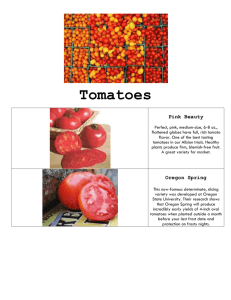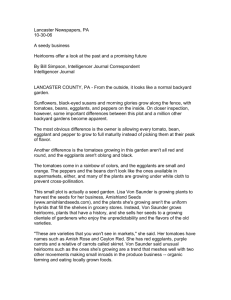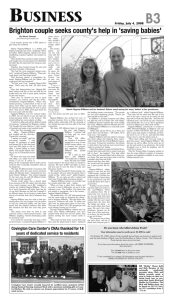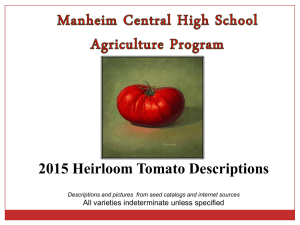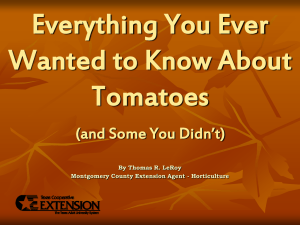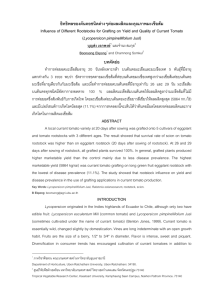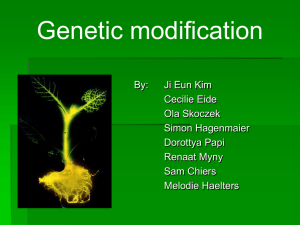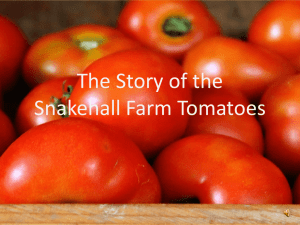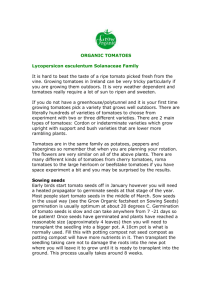MS Frankenplants Reading Handout v1.1
advertisement
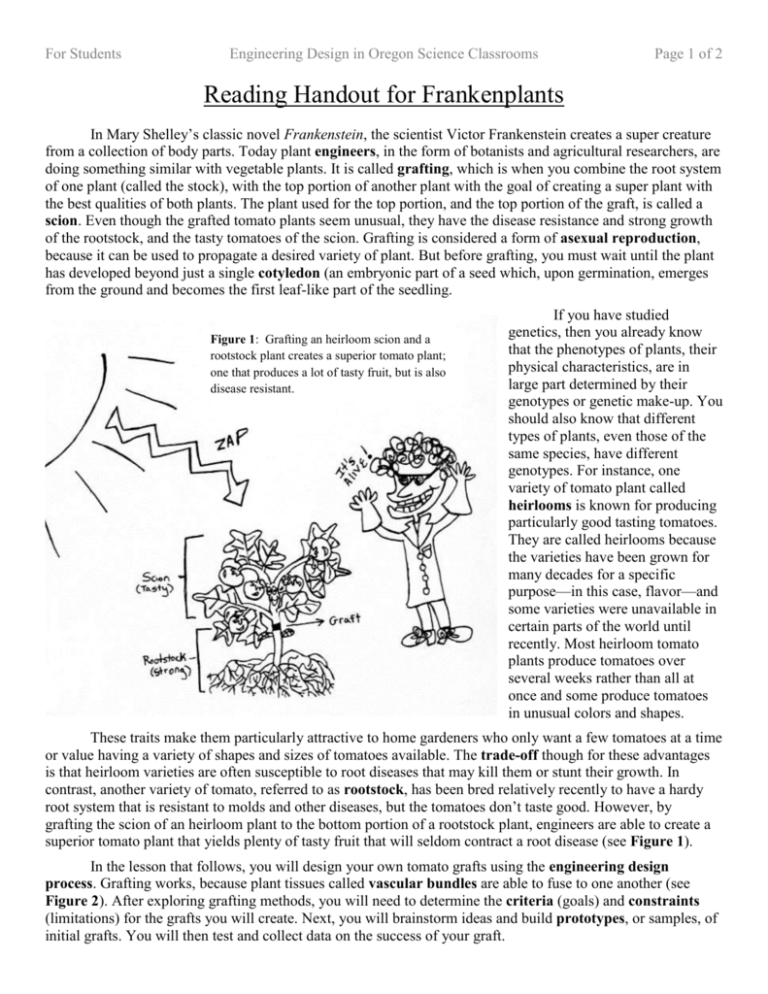
For Students Engineering Design in Oregon Science Classrooms Page 1 of 2 Reading Handout for Frankenplants In Mary Shelley’s classic novel Frankenstein, the scientist Victor Frankenstein creates a super creature from a collection of body parts. Today plant engineers, in the form of botanists and agricultural researchers, are doing something similar with vegetable plants. It is called grafting, which is when you combine the root system of one plant (called the stock), with the top portion of another plant with the goal of creating a super plant with the best qualities of both plants. The plant used for the top portion, and the top portion of the graft, is called a scion. Even though the grafted tomato plants seem unusual, they have the disease resistance and strong growth of the rootstock, and the tasty tomatoes of the scion. Grafting is considered a form of asexual reproduction, because it can be used to propagate a desired variety of plant. But before grafting, you must wait until the plant has developed beyond just a single cotyledon (an embryonic part of a seed which, upon germination, emerges from the ground and becomes the first leaf-like part of the seedling. Figure 1: Grafting an heirloom scion and a rootstock plant creates a superior tomato plant; one that produces a lot of tasty fruit, but is also disease resistant. If you have studied genetics, then you already know that the phenotypes of plants, their physical characteristics, are in large part determined by their genotypes or genetic make-up. You should also know that different types of plants, even those of the same species, have different genotypes. For instance, one variety of tomato plant called heirlooms is known for producing particularly good tasting tomatoes. They are called heirlooms because the varieties have been grown for many decades for a specific purpose—in this case, flavor—and some varieties were unavailable in certain parts of the world until recently. Most heirloom tomato plants produce tomatoes over several weeks rather than all at once and some produce tomatoes in unusual colors and shapes. These traits make them particularly attractive to home gardeners who only want a few tomatoes at a time or value having a variety of shapes and sizes of tomatoes available. The trade-off though for these advantages is that heirloom varieties are often susceptible to root diseases that may kill them or stunt their growth. In contrast, another variety of tomato, referred to as rootstock, has been bred relatively recently to have a hardy root system that is resistant to molds and other diseases, but the tomatoes don’t taste good. However, by grafting the scion of an heirloom plant to the bottom portion of a rootstock plant, engineers are able to create a superior tomato plant that yields plenty of tasty fruit that will seldom contract a root disease (see Figure 1). In the lesson that follows, you will design your own tomato grafts using the engineering design process. Grafting works, because plant tissues called vascular bundles are able to fuse to one another (see Figure 2). After exploring grafting methods, you will need to determine the criteria (goals) and constraints (limitations) for the grafts you will create. Next, you will brainstorm ideas and build prototypes, or samples, of initial grafts. You will then test and collect data on the success of your graft. For Students Engineering Design in Oregon Science Classrooms Page 2 of 2 It’s important to note that neither the heirlooms nor rootstocks you will use in this activity occur naturally in the wild. Instead, both have been genetically engineered through selective breeding, a process by which engineers deliberately cross certain species in order to achieve desirable characteristics in the offspring. Selective breeding is a type of genetic engineering that has been performed scientifically for over 100 years—do not confuse this with gene splicing or recombinant DNA techniques, which have become possible in the last 20 years. The rootstock varieties you will use in this lesson were created in the Netherlands from a cross Figure 2: Vascular tissue can be seen at the grafting point. It is lighter in between S.lycopersicon and S.habrochaites color than the stems. and are reported to be resistant to tomato root rot and nematodes, which are a type of roundworm. Both of the parent species that produced the disease resistant rootstock plants are pure homozygous meaning they have two of the same alleles. Thus all the resulting offspring of their cross are hybrids, which mean they have two different alleles of the same gene (see Figure 3). This is a drawback for growers who want to propagate their own seeds, because if they let some of the rootstock plants produce tomatoes, perhaps 50% of the tomatoes would contain hybrid seeds, but it is unlikely that the growers would be able to tell them apart from the other homozygous tomato seeds (see Figure 4). As a result every year growers must purchase new seeds instead of making their own. In contrast most heirloom species are homozygous for the traits associated with the particular variety so the seeds they produce result in similar offspring. . Homozygous Genotype (alleles) RR Phenotype (characteristics) Resistance to rot root Homozygous + NN Resistance to nematodes Hybrid = RN Resistance to root rot and nematodes Figure 3: The cross between S.lycopersicon and S.habrochaites is an example of codominance. Resistance to root rot and nematodes are both dominate traits so the hybrid offspring display both phenotypes. Figure 4: The offspring of two hybrid rootstock tomatoes would likely be 25% RR, 50% RN, and 25% NN, but all the seeds would look the same.


